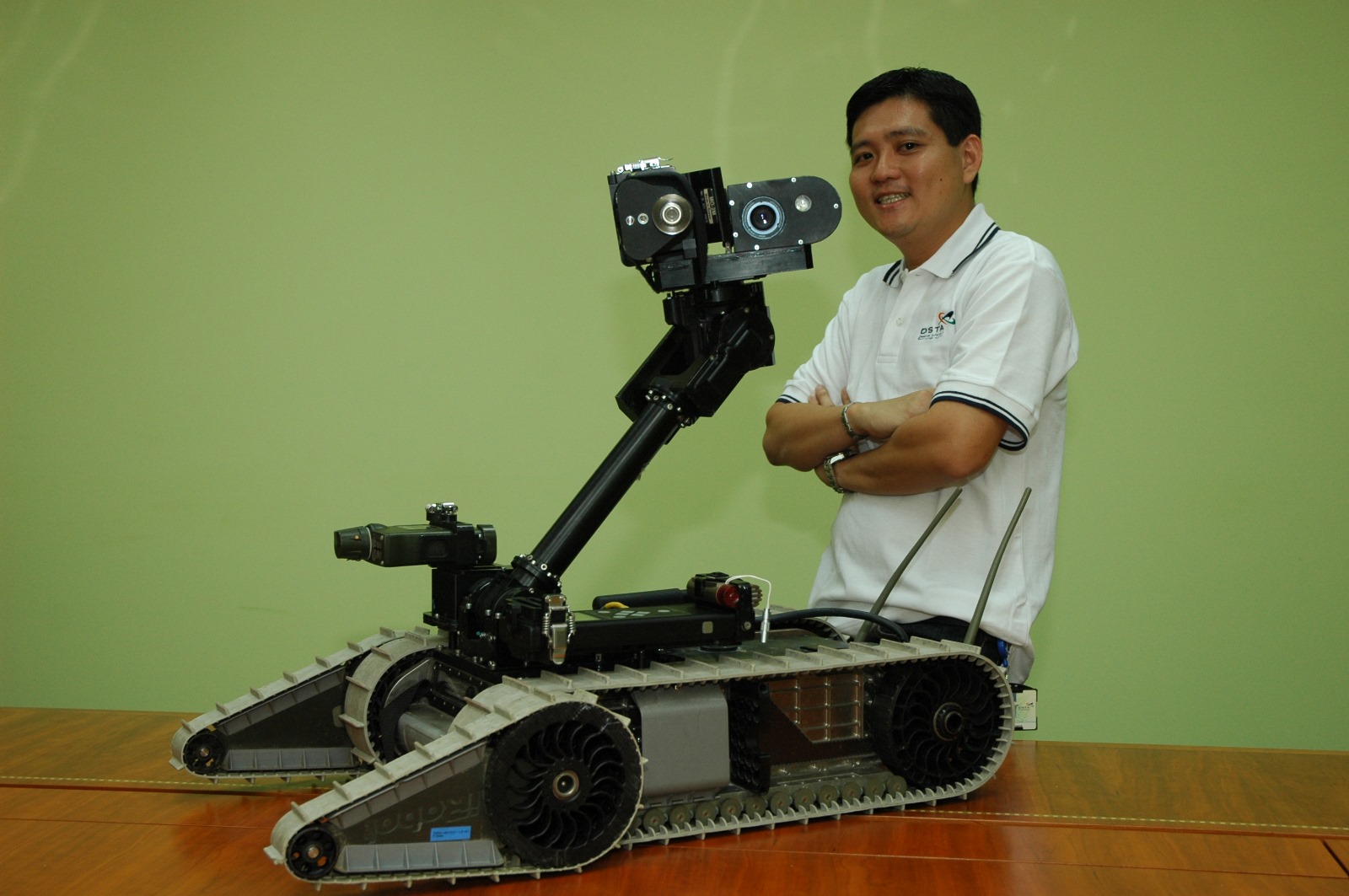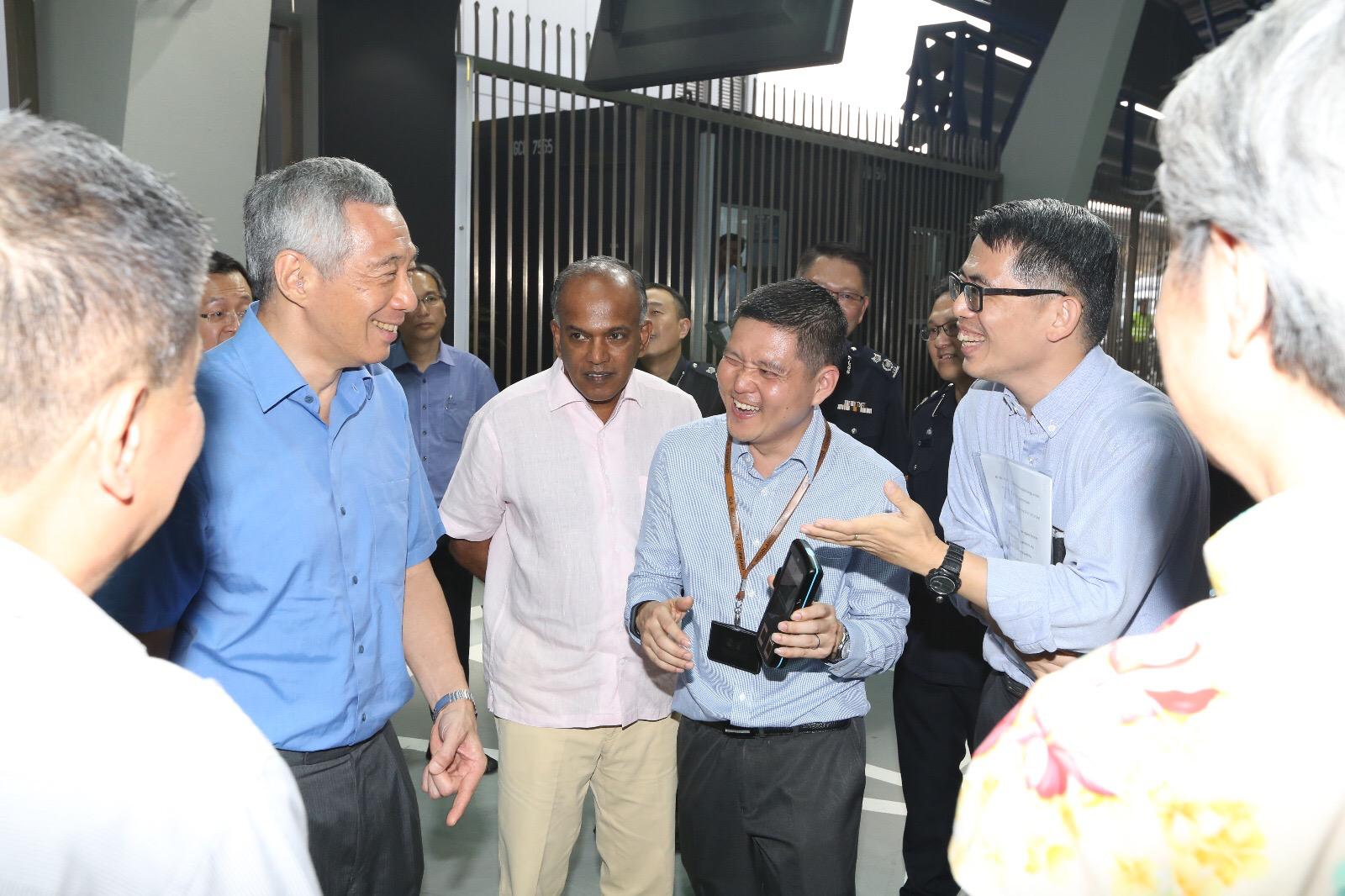-(1).jpg?sfvrsn=29ba04ba_1)
HTX’s robotics guru Cheng Wee Kiang. (Photo: HTX)
This personality profile is part of a series of stories about Xponents who have been with HTX since the very beginning. Their contributions have been pivotal to the growth of the agency, which celebrates its 5th birthday on 1 Dec 2024.
HTX’s Director of Plans and Strategy Cheng Wee Kiang still remembers that fateful moment in primary school when his teacher asked the class what their ambitions in life were.
Unlike most of his classmates who gave answers typical of the 1980s - they wanted to be doctors and lawyers - Wee Kiang said he wanted to be an engineer.
The reason behind this, he explained, was his obsession with building things. This was exactly why he was and still is a big fan of Lego, which has been such an important part of his life he still fondly remembers the first set he received – it was the 377-1 Shell Service Station that was released in 1978.
In fact, the man had at one point in his life boasted a collection comprising around 40 sets of Lego toys.
Building up his Lego collection back in the 1980s, he added, wasn’t easy as the toys didn’t come cheap, he recalled. “A small set could cost between S$10 and S$20. That was exorbitant considering you could get a meal at the school tuck shop for just 30 to 50 cents,” he said.
“This was why I didn’t have many Lego toys when I was a kid. I got only a couple of sets every year. My grandmother loved pampering my brothers and me, and she would occasionally buy the toys for us when we went shopping at Metro or OG. The rest of the toys were given as rewards for doing well in my exams.”
-(1).jpg?sfvrsn=fde41501_1)
Wee Kiang’s love for Lego is one that has spanned nearly five decades. (Photo: HTX)
But Wee Kiang didn’t just like building things. He also had a penchant for taking things apart. One instance of this was the primary school project in which he and his classmates had to put together an aquarium. When the group of kids realised that they couldn’t activate the water pump because it came with a narrow two-pin plug that wouldn’t fit into the electrical socket, the precocious tinkerer sprang into action and let his enthusiasm get the better of him.
“I snipped the water pump’s plug off and replaced it with a three-pin variant that I removed from another appliance. I even made sure that I connected all the wires properly. I thought it was such a bright idea,” he chuckled.
But reality proved otherwise. The school suffered from a blackout the moment he turned the switch on. “Come think of it, I was so naively garang. I could’ve gotten electrocuted!”
Unfortunately for his mother, Wee Kiang’s voracious curiosity never waned even after he grew older.
“There was a point when I was taking apart random appliances at home and tinkering with their circuits because I wanted to know how they work. I’d also pry open broken radios and try to fix them,” he quipped.
“My mother was very upset with me, because many of those things didn’t work again after I put them back together!
A knack for optimisation
Driven by this passion, Wee Kiang opted to study engineering at the National University of Singapore (NUS). But though he was much more interested in mechatronics, he made an astute decision to instead major in thermodynamics - because he knew he would do better in the discipline.
But don’t ever be mistaken that this relaxed approach means we Xponents don’t get work done. Just look at how quickly we have grown our capabilities in such a short span of time. Here at HTX, we work hard and play hard.
To satisfy his desire to dabble with mechatronics, he spent many hours hanging out with his peers who majored in the discipline and learning how they went about building robots.
“There’s always a desire in me to optimise things, and this to me was the most optimal way to go about my education. Taking this approach meant that I would get good grades and still learn about what I was most interested in,” he explained.
This move seemingly paid off, because his stellar grades saw him hired as an engineer at the Defence Materiel Organisation (DMO) under the Ministry of Defence.
Wee Kiang recalled being excited about the role because it would allow him to do “hardcore engineering” that involved large scale equipment and play a part in building heavy weaponry such as tanks.
But as it turned out, he was assigned to create robotics solutions that could help soldiers with their reconnaissance as well as search and rescue missions.
About a year and a half later, he was transferred to the newly formed Defence Science and Technology Agency (DSTA), where he eventually got to take charge of a project related to the PackBot, which was supplied by American robotics company iRobot.

Wee Kiang with the PackBot (Photo: DSTA)
Considered revolutionary at that time because of its ability to climb stairs and navigate through rough terrain, a suite of robots based on the PackBot was created as part of a joint
project between the Singapore Armed Forces’ Chemical, Biological, Radiological and Explosive Defence Group, DSTA and DSO. For this project, Wee Kiang worked closely with fellow engineers to customise and optimise the robot so that it
could carry payloads used by the Singapore military.
Another career highlight of his was getting to develop an unmanned version of the M113, a tracked armored personnel carrier, for experimentation by the Singapore Army.
Making a difference in society
In 2012, Wee Kiang was presented with the chance to join the Ministry of Home Affairs, which was then in the midst of putting together a team to drive its automation efforts.
“I enjoyed my time at DSTA, but I didn’t get a sense of achievement because all the things I did were largely experimental in nature,” he said.
“But with this new role at the MHA, I knew that my efforts would eventually culminate in an innovation that can be used by the Home Team to enhance Singapore’s safety and security. And that was a very attractive proposition.”
Wee Kiang wasted no time in helping Home Team Departments optimise their operations after taking up the new role. The first project he managed was an automated equipment handling system that he designed for the Singapore Prison Service. He then
created an automated image processing system that automatically stores and retrieves DVDs containing case files for the Central Narcotics Bureau. He also helped procure robotic solutions for the Singapore Police Force’s elite Special
Operations Command.
Among the projects that had the greatest impact on the public security was the Automated Passenger In-Car Clearance System (APICS), which at that time involved using robotic arms to deliver wireless biometric devices for fingerprints and face so that drivers could complete immigration clearance within the comfort of their vehicles. He was also involved in the development of the first iteration of the Multi-purpose All-Terrain Autonomous Robot (M.A.T.A.R.).

Wee Kiang speaking with the then Prime Minister of Singapore Mr Lee Hsien Loong during a showcase of the APICS. (Photo: ICA)
In 2019, after joining HTX as the director of its Robotics, Automation & Unmanned Systems (RAUS) Centre of Expertise (CoE), Wee Kiang continued working on the two systems and oversaw efforts to upgrade them.
Today, APICS uses contactless facial and iris scanners, while M.A.T.A.R. is in its fourth iteration and is equipped with high-tech sensors and a camera that is fully autonomously and can provide 360-degree video feeds to an off-site Command Centre.
The robot was particularly useful during the Covid-19 pandemic as it helped performed patrols at a government quarantine facility and foreign worker dormitories, thus reducing the exposure of frontline officers.
Under his leadership, the RAUS CoE quickly expanded in just a few months and went on to build new capabilities that have augmented Home Team operations. Among them are Beyond Visual Line of Sight (BVLOS) flights for Unmanned Aerial Vehicles (UAVs), the Prison Automated Screening System (PASS), which can automatically collect urine samples and screen supervisees for illicit drugs, and the Rapid Deployable C-UAS System (RDS), which can detect, track and even jam hostile drones.

Wee Kiang posing with the M.A.T.A.R. (Photo: MHA)
Loving the X-factor
While Wee Kiang is unabashedly proud of how quickly the RAUS CoE has evolved in just five years, he cites the evolution of HTX’s culture as the one thing he has been most amazed by.
“HTX was formed by bringing together
people from all the Home Team Departments, which each had their own unique culture. To get everyone to gel and work together as one was a tall order, one that required concerted efforts to grow a culture unique to HTX,” he explained.
“I think what the pioneering leaders of the agency have done is nothing short of impressive. Just look at this vibrant culture we have created in just five years.”
One of the most potent catalysts behind the forging of this unique company culture, he pointed out, was the chief executive’s decision to adopt a “relaxed” approach that allowed Xponents to dispense with the formalities when interacting with senior management and wear whatever they want to the office.
“I really like that HTX is a place where the chief executive might question you if you dress too formally for work,” he laughed. “Getting to dress down for work might not seem like a big deal, but it really does have a poignant effect on behaviour. I think that when things are more casual and less hierarchical, people are more at ease, and this is when they can really focus on their work.
“But don’t ever be mistaken that this relaxed approach means we Xponents don’t get work done. Just look at how quickly we have grown our capabilities in such a short span of time. Here at HTX, we work hard and play hard.”
.jpg?sfvrsn=7a102942_1)
Wee Kiang at eXpresso, a town hall event that highlights HTX exuberant culture. (Photo: HTX)
On the topic of play, Wee Kiang shared that he enjoys going on long walks and runs. He has also been an avid supporter of
Liverpool football club for more than four decades.
When asked if he is still building his collection of Lego toys, the man sheepishly admitted that he hasn’t bought any new sets in recent years except for the handful
of Lego toy plants he recently got as a replacement for the succulents that withered.
The reason? His wife has “banned” him from buying more as there just isn’t any more space in the home to fit his toys as well as those of their son, who like Wee Kiang loves Lego and Transformers.
“All I can say is that my wife has a lot of influence in the home. I think not crossing her would be the most optimal way to go about this marriage,” he mused.
“You know, happy wife, happy life.”
We are always seeking inquisitive and innovative individuals to co-create extraordinary solutions with us.
Join us to be at the forefront of the finest tech capabilities in the field! Join Us

